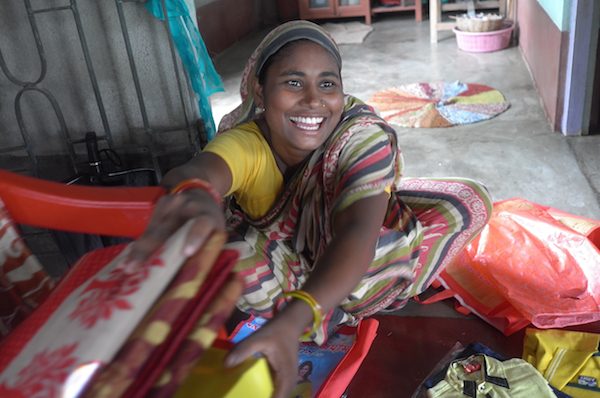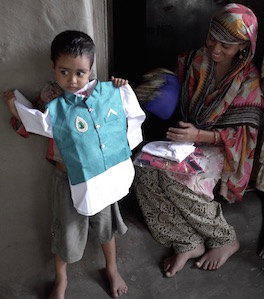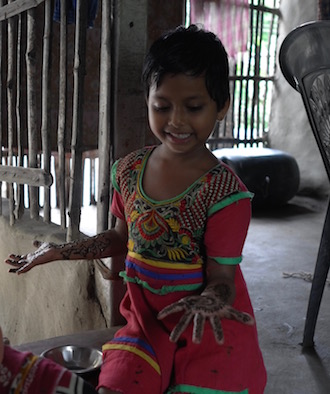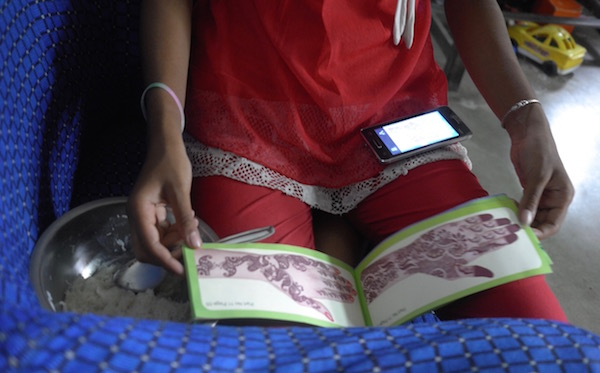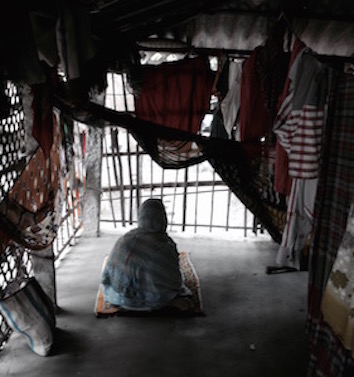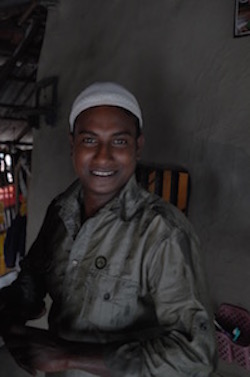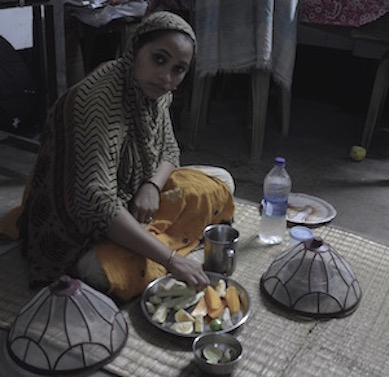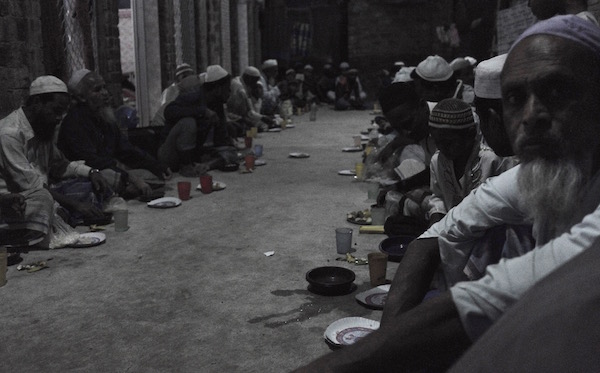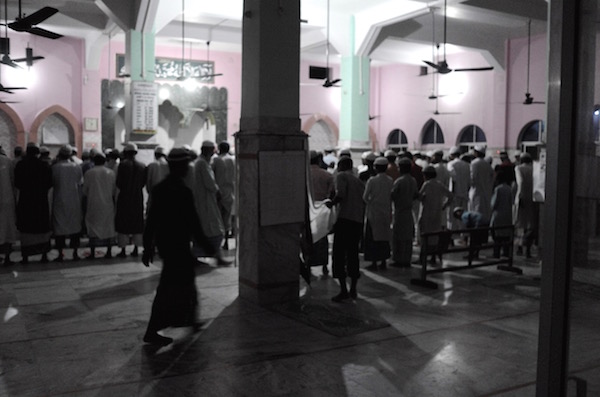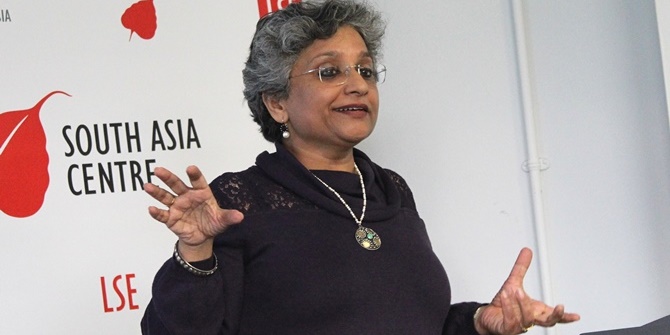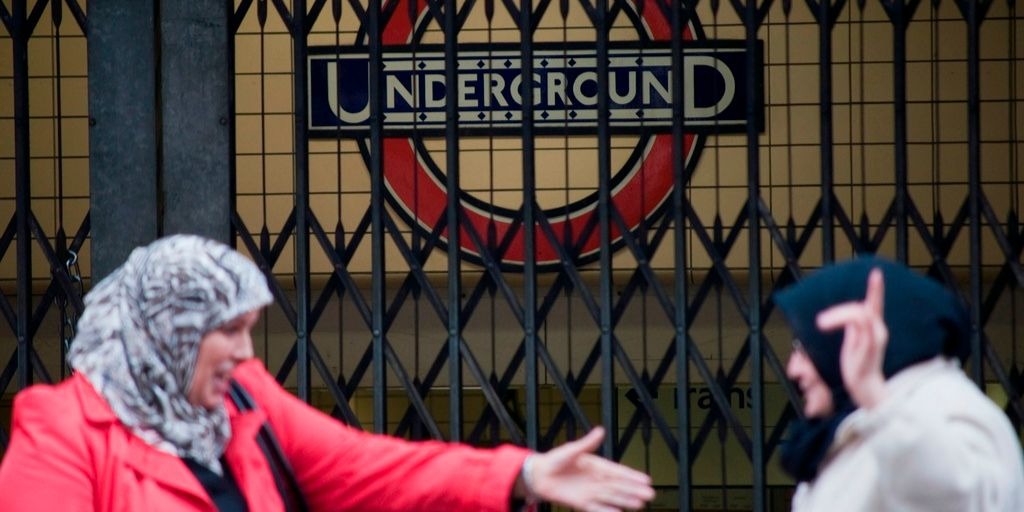 This week, Muslims around the world are celebrating Eid-ul-Fitr. Reporting from her fieldsite in West Bengal, Lexi Aisbitt describes the excitement and anticipation as the community prepared for the festival and the end of fasting.
This week, Muslims around the world are celebrating Eid-ul-Fitr. Reporting from her fieldsite in West Bengal, Lexi Aisbitt describes the excitement and anticipation as the community prepared for the festival and the end of fasting.
Tomorrow it is Eid. Or is it? On a sluggish Tuesday in a remote Muslim village in West Bengal, as the monsoon rains fall intermittently, the atmosphere is expectant. “My sister’s son is in Saudia Arabia” someone tells me, “He phoned yesterday to say the moon had not been spotted, so it may not be tomorrow. We don’t know…we are waiting”. Eid-ul-Fitr, the most revered of Muslim festivals that brings to an end a month of fasting, is dependent on the sighting of the new crescent moon. Thus although a date may be forecast, nothing is certain.
This has not prevented simmering levels of excitement in the preceding days. A flurry of visits to the local bazaar, with some more affluent families venturing as far as Kolkata, has led to stockpiles of new clothes and jewellery for the occasion. In contrast to the typical secrecy surrounding presents at Christmas, adults and children alike proudly display their new clothes and jewellery, gleefully boasting of the numbers of sets of clothing they’ll give or receive.
Elsewhere in the village, girls and women alike are planning for chand rat or the moon night, in which traditionally henna paint is applied to the hands in beautiful patterns. The excitement proves too much for younger girls, who eagerly get started in the afternoon, whilst teenagers extensively deliberate over which designs they’ll choose.
As the late afternoon azan rings out, people offer prayers at home before slowly preparing for the breaking of the fast that will occur shortly, once the sun sets. Different fruits are washed and sliced, channa (chickpeas), are boiled, mixed with chopped onions and chillies. Nimbu pani, water with freshly squeezed lime juice, is mixed with salt and sugar and will be the first thing to be consumed. Dishes are carefully laid out, items salted or sweetened, and people wait.
In the large mosque at the centre of the village, men begin to gather for the iftar, the meal breaking the day’s fast that they will all share together. As the call to prayer flows out across the darkened landscape marking the end of the fast, people begin to slowly eat, discussing the days events and what will happen tomorrow. As they finish eating and rise for prayers, the Imam announces that the moon has not been sighted, so Eid will not fall tomorrow. They will just have to wait.
All images by Lexi Aisbitt
Note: This article gives the views of the author, and not the position of the South Asia @ LSE blog, nor of the London School of Economics. Please read our comments policy before posting.
About the Author
 Lexi Aisbitt is a doctoral candidate in LSE’s Department of Anthropology, and recently completed her ethnographic fieldwork in West Bengal.
Lexi Aisbitt is a doctoral candidate in LSE’s Department of Anthropology, and recently completed her ethnographic fieldwork in West Bengal.


